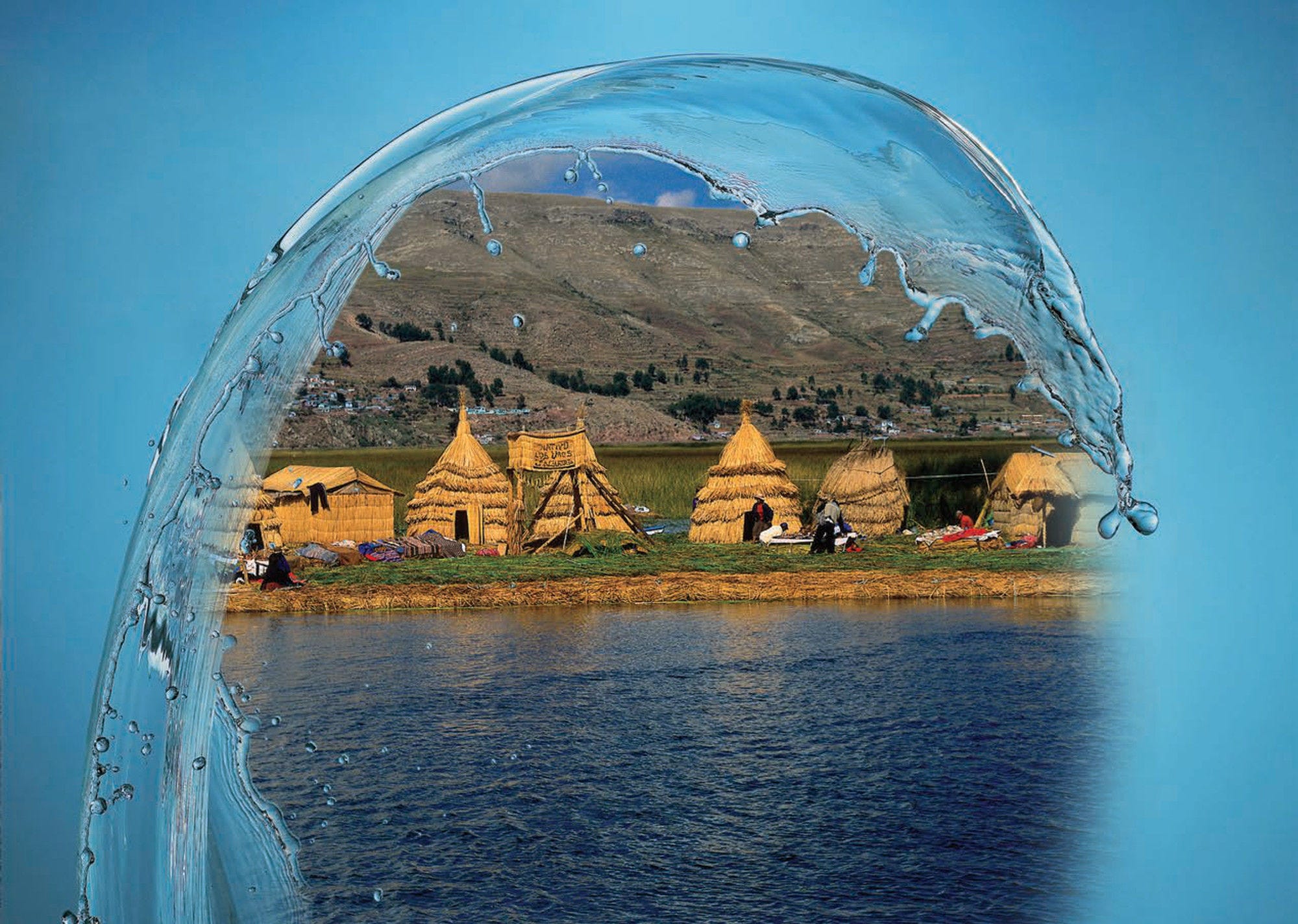While the COVID-19 virus has hit Peru particularly hard, with 1.4 million confirmed cases as of March 2021, the pandemic has further emphasised the importance of water and sanitation for health, the environment and the economy. From a health standpoint, the pandemic has taken a strong toll on Peru, the fifth-most affected country in the LAC region with about more than 45 000 deaths to date. On the economic front, in the first half of 2020, Gross domestic product (GDP) declined by 11.4%. Projections show that GDP will not return to pre-crisis levels before 2022, and aggregate growth will continue to be driven by water-intensive sectors, such as agriculture. Regarding the environment, high levels of rainfall in certain areas and inadequate drainage systems have created a dual health risk with the overflowing and flooding of untreated wastewater, which, in turn, hinder proper hygiene conditions that can prevent the spread of the virus.
Although Peru has made good progress in water management, significant water security challenges remain in terms of floods, droughts, pollution and universal access to drinking water and sanitation. Peru is currently not on track to meet the targets of the United Nations (UN) Sustainable Development Goal (SDG) 6 “Clean water and sanitation” by 2030. According to the most recent data (2017) from the UN Water monitoring system, only 50% of the population use a safely managed drinking water service (SDG indicator 6.1.1) and 43% use a safely managed sanitation service (SDG indicator 6.2.1a). Overall, 3 million Peruvians (9.2% of the population) lack access to water services and 8.2 million Peruvians (25.2%) lack access to sewerage services, with a large urban-rural divide. Between 2000 and 2020, floods affected an estimated 4 million people, while 10 moderate to extreme drought events occurred in 20 departments between 1981 and 2018. The inadequate management of solid waste and informal and illegal mining affect water quality, leading to severe public health issues, and social conflicts, including with indigenous communities.
In response to these challenges, the National Sanitation Policy 2017-21 set out Peru’s objective to achieve sustainable, universal access to water and sanitation, with the underlying goal of expanding coverage, improving water quality and promoting the sustainable use of sanitation services. In addition, Peru’s nationally determined contribution (NDC) aims to achieve the Paris Agreement of the UNFCCC targets by 2025 and 2030 through 30 adaptation measures on water to be implemented in a shared responsibility with regional and local governments. These measures include the modernisation of the granting of water use rights in basins especially vulnerable to climate change, incorporating climatic scenarios, and implementing early-warning systems for floods, droughts, landslides and glacier-related risks.
Over the last decade, Peru has consolidated its legal and institutional framework for water policy, but governance gaps hinder effective implementation. State Policy no. 33/2012 on Water Resources acknowledges that water is part of the public domain and recognises the human right to water and sanitation, following the UN Assembly Declarations in 2010 and 2015. It also highlights the relevance of implementing integrated water resources management in order to guarantee the equitable and sustainable use of water nationwide. The 2009 Water Resources Law sets the legal and institutional framework for water resources management, and a myriad of institutions hold water and sanitation prerogatives in terms of policy design, financing, regulation and implementation. However, coordination failures and capacity gaps across these various institutions hinder the implementation of social, financial and technological solutions to identified water challenges.
Peru has adopted economic and financial instruments for water resources management, but their implementation is lagging. For instance, good practices include the gradual implementation of abstraction charges and payments for groundwater, with some environmental criteria being factored in; the existence of treated wastewater discharges for domestic and industrial discharges; as well as coefficients to reflect water availability and type of use for surface water. However, these instruments are set too low to collect the revenues needed to bridge the current 46 USD million funding gap by 2035. Achieving this goal, would require disclosing more systematically how collected revenues are used and how they contribute to coping with water quantity and quality challenges, while taking into account affordability and distributional effects.
While Peru has set water issues high in its policy agenda, wider governance failures have put in jeopardy policy continuity and delivery. Since 2018, Peru has been subject to political challenges that can largely be traced to the 2016 Odebrecht affair, since when the Peruvian presidency has changed four times. The nationwide political instability has had serious consequences for water and sanitation with four ministers of environment being appointed over the same period and staff turnover in the public administration resulting in shifting priorities and budgets, which were aggravated by the COVID-19 pandemic.
The primary goal of good water governance is to contribute to mastering complexity and fragmentation, which are inherent to water policy. This entails dealing with sectoral policy coordination, improving the data and knowledge base, delivering innovative financing mechanisms, addressing trade-offs across water users, revisiting policy approaches related to water use efficiency, diversifying water supply sources and natural infrastructures, and building capacity. Strengthening water governance in Peru is a means to achieving long-term water security, and aligning individual user behaviour and collective action. In line with the OECD Principles on Water Governance, the report suggests a series of tailored policy recommendations to strengthen the multi-level governance of water policy, the effectiveness of economic instruments, and the regulatory framework for water supply and sanitation services in Peru.
